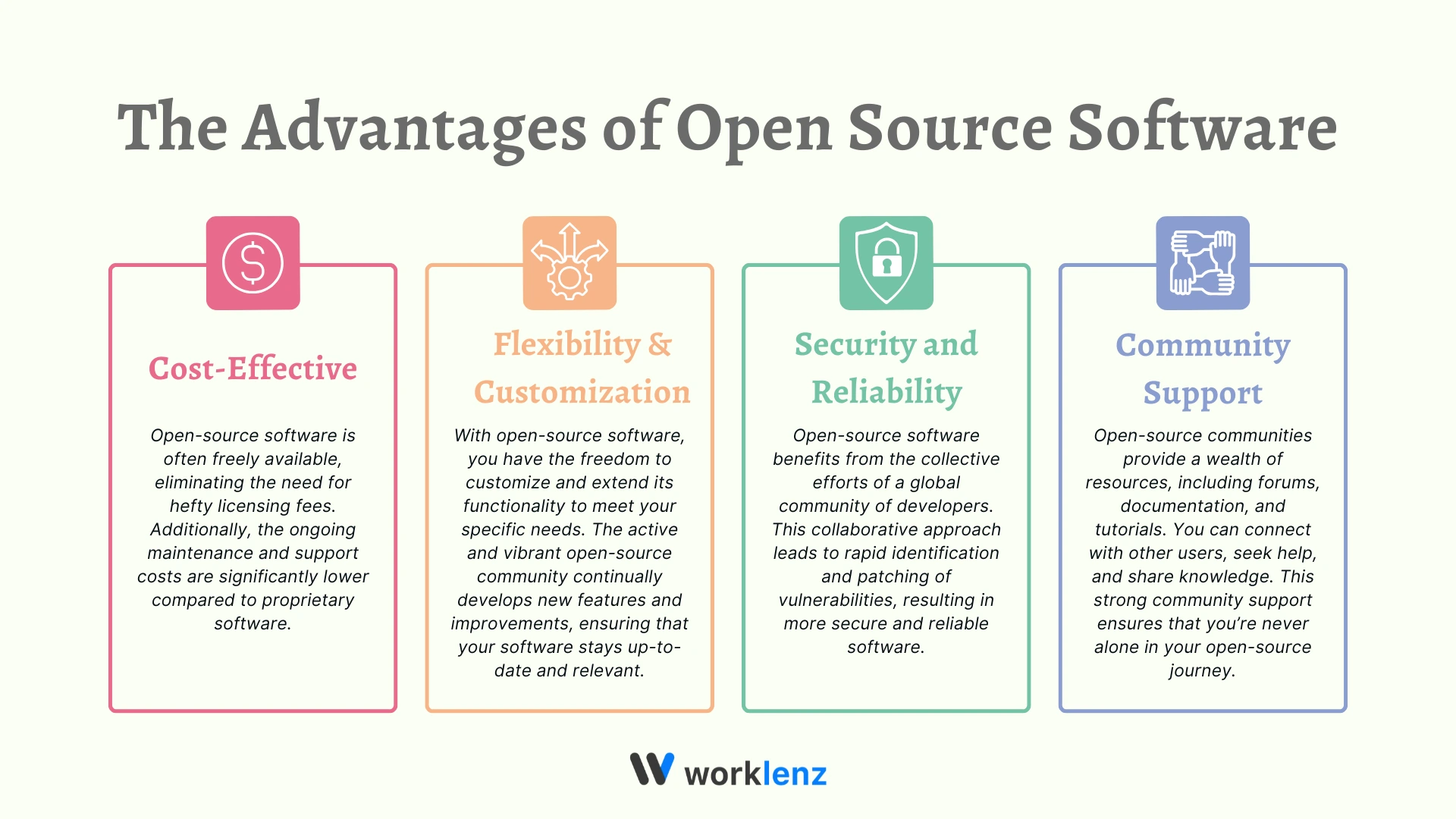
Did you know businesses spend billions annually on proprietary software licenses, with costs set to rise by 10-15% each year?
While proprietary software may offer convenience, it comes with hidden expenses like recurring licensing fees, vendor lock-in, and lack of customization. In contrast, open-source solutions, such as Worklenz, provide flexibility, control, and cost savings, helping businesses avoid the pitfalls of proprietary systems and take charge of their software environment.
Proprietary software often comes with hidden costs that businesses might not immediately recognize. While the initial price tag might seem justified, recurring licensing fees, long-term vendor lock-ins, and a lack of flexibility can significantly impact your bottom line. Open-source software, in contrast, removes these barriers by offering cost-effective solutions that are highly customizable. The ability to modify and distribute open-source software freely not only helps companies reduce costs but also allows for greater control over the software environment.
Open-source software is a type of software where the source code is freely available to the public. This means anyone can view, modify, and distribute the software. Open-source projects are often developed by communities of programmers who collaborate to improve the software.
Popular examples of open-source software include,
Linux - A popular operating system that powers millions of servers and desktops worldwide.
Apache - A powerful web server that powers a significant portion of the internet.
WordPress - A flexible content management system used by millions of websites.
Proprietary software, also known as commercial software, is software that is owned by a specific company. The source code of proprietary software is not publicly available, and users typically have to purchase licenses to use it.
Common examples of proprietary software include,
Microsoft Windows
Adobe Creative Suite
Microsoft Office
Now that we’ve established the basics, let’s explore the many advantages of open-source software.
While proprietary software may seem convenient at first glance, it often comes with hidden costs that can significantly impact your budget.
Proprietary software often requires recurring license fees, which can add up over time.
Keeping proprietary software up-to-date and secure can involve additional costs for updates, patches, and technical support.
Proprietary software can limit your options and tie you to a specific vendor.
Migrating to a different software solution can be time-consuming and expensive.
Proprietary software often offers limited customization options, making it difficult to tailor the software to your specific needs.
You may need to rely on the vendor for updates, bug fixes, and new features.
Let’s take a moment to explore the many advantages of open-source software, which can help you save money, increase flexibility, and improve security.
Open-source software offers a plethora of benefits that can significantly impact your business.

Cost-Effective - Open-source software is often freely available, eliminating the need for hefty licensing fees. Additionally, the ongoing maintenance and support costs are significantly lower compared to proprietary software.
Flexibility and Customization - With open-source software, you have the freedom to customize and extend its functionality to meet your specific needs. The active and vibrant open-source community continually develops new features and improvements, ensuring that your software stays up-to-date and relevant.
Security and Reliability - Open-source software benefits from the collective efforts of a global community of developers. This collaborative approach leads to rapid identification and patching of vulnerabilities, resulting in more secure and reliable software.
Community Support - Open-source communities provide a wealth of resources, including forums, documentation, and tutorials. You can connect with other users, seek help, and share knowledge. This strong community support ensures that you’re never alone in your open-source journey.
Now that we’ve explored the basics, let’s enter the exciting world of open-source software.
Choosing between open-source and proprietary software can be a daunting task. To make an informed decision, consider the following factors,
Assessing Your Specific Needs
Clearly define your organization’s specific needs and goals.
Research both open-source and proprietary solutions that align with your requirements.
Choose a solution that can scale with your business as it grows.
Understanding Compatibility Issues
Ensure that the chosen software can integrate seamlessly with your existing systems.
Verify compatibility with your hardware infrastructure.
Evaluating Hidden Costs
Consider the long-term costs, including licensing fees, maintenance, and support.
Assess the availability of training resources and technical support for both open-source and proprietary software.
You can make an informed decision that maximizes the benefits of open-source software while minimizing potential risks.
Open-source software has come a long way, and its future looks promising. As technology continues to evolve, open-source solutions are becoming increasingly sophisticated and powerful.
Community-Driven Innovation: Open-source communities are constantly collaborating to develop innovative solutions and address emerging challenges.
Increased Enterprise Adoption: More and more businesses are embracing open-source software to reduce costs, improve flexibility, and enhance security.
The Rise of Open-Source Hardware: Open-source hardware, such as Raspberry Pi and Arduino, is empowering individuals and organizations to create custom solutions.
You can give your business a competitive edge by embracing open-source software. It’s a powerful tool that can help you innovate faster, reduce costs, and stay ahead of the curve.
In conclusion, open-source software offers a compelling alternative to traditional proprietary software. By understanding the benefits and challenges of both approaches, you can make informed decisions that align with your business goals.
Embrace the power of open-source software to unlock innovation, reduce costs, and enhance your business’s competitiveness. By joining the vibrant open-source community, you can contribute to the development of cutting-edge technologies and shape the future of software.